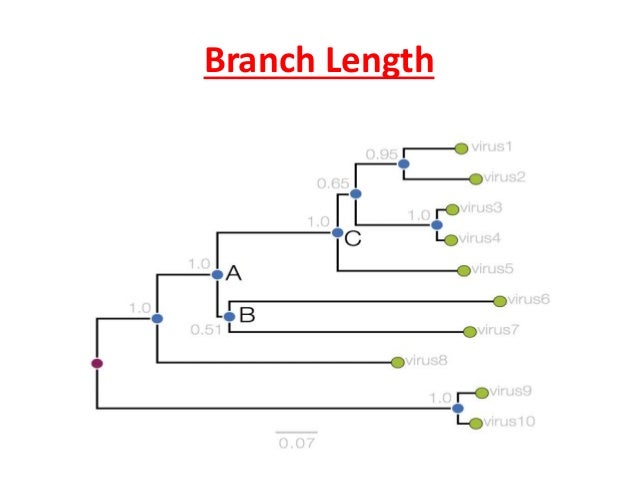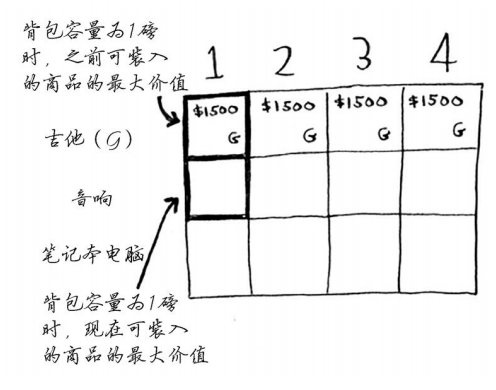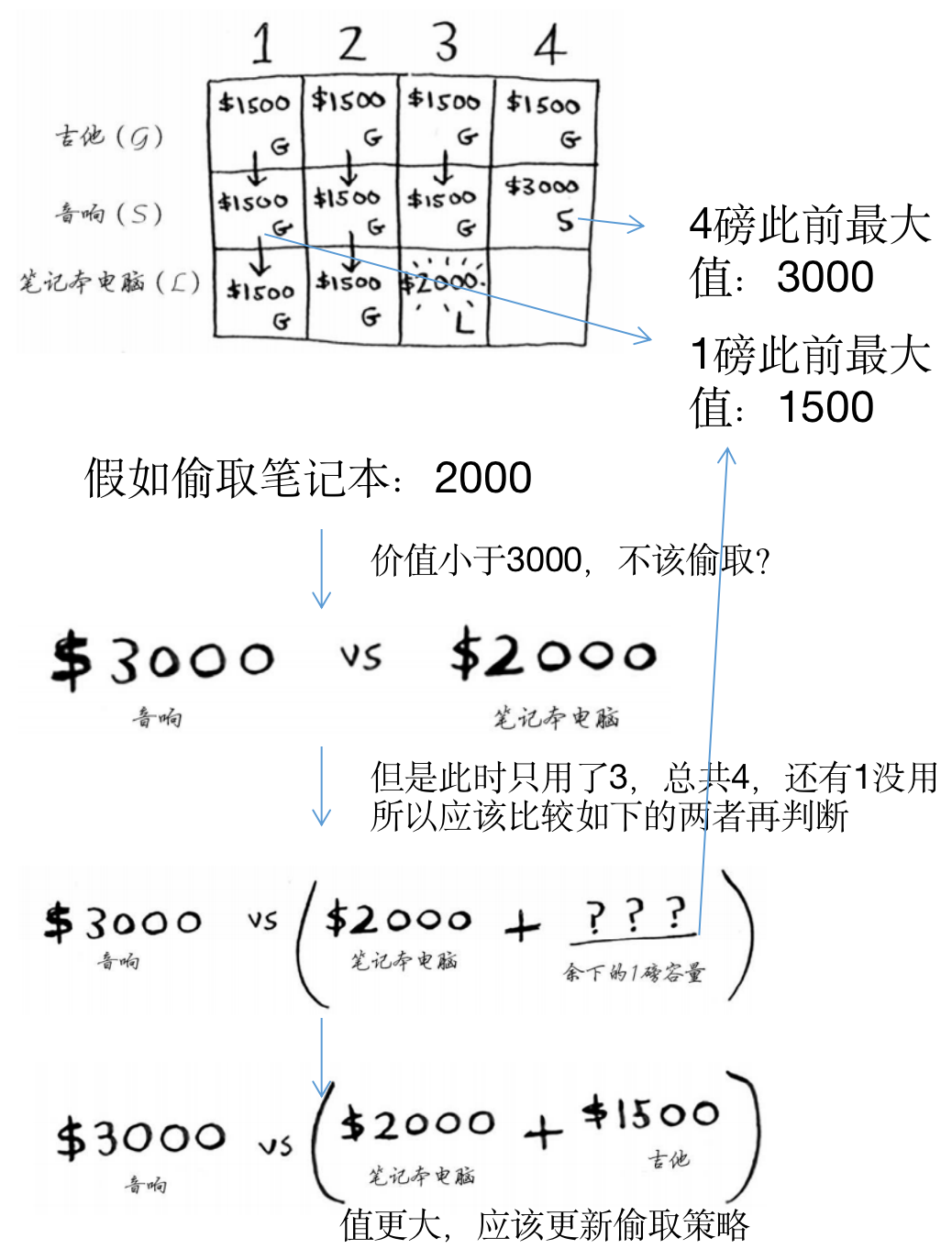Line plot
2017-02-27
Smooth line in pyplot stackoverflow
from scipy.interpolate import spline
T = np.array([6, 7, 8, 9, 10, 11, 12])
power = np.array([1.53E+03, 5.92E+02, 2.04E+02, 7.24E+01, 2.72E+01, 1.10E+01, 4.70E+00])
#300 represents number of points to make between T.min and T.max
xnew = np.linspace(T.min(),T.max(),300)
power_smooth = spline(T,power,xnew)
plt.plot(xnew,power_smooth)
plt.show()
| Not smooth | Smooth |
|---|---|
 |
 |
Read full-text »
Algorithm: 数据结构和算法的可视化
2017-02-18
Data Structure Visualizations
- link: https://www.cs.usfca.edu/~galles/visualization/Algorithms.html
- 优点:
- 这是比较全面的包含了,基本的数据结构和算法的演示
- 演示的界面包含python写的代码
- 缺点:界面比较古老
- 内容列表:

- 二分查找演示界面:

algorithm-visualizer
- link: https://algorithm-visualizer.org/
- 优点:
- 内容全面
- 界面现代化程度高,比较精美
- 缺点:
- 代码支持三种:Java,C++,JavaScript
- 内容列表:

- 二分查找演示界面:

VisuAlgo
- link: https://visualgo.net/en
- 优点:
- 支持多种语言的界面,英文+中文等
- 涉及的内存全面
- 缺点:
- 主要包含算法,缺少数据结构的演示
- 基本的算法没有,比如二分查找
- 内容列表:

- 快速排序演示界面:

Read full-text »
Set up config for jupyter notebook
2017-02-10
jupyter notebook的配置
新建配置文件
参考这篇文章,对自己的notebook进行配置,方便快捷。比如可以在打开notebook时直接先加载一些模块等。
# creat新建配置文件
gongjing@MBP ~/.ipython/profile_default % ipython profile create
[ProfileCreate] Generating default config file: u'/Users/gongjing/.ipython/profile_default/ipython_config.py'
[ProfileCreate] Generating default config file: u'/Users/gongjing/.ipython/profile_default/ipython_kernel_config.py'
gongjing@MBP ~/.ipython/profile_default % ll
total 16304
drwxr-xr-x 2 gongjing staff 68B Jun 18 2016 db
-rw-r--r-- 1 gongjing staff 7.9M Feb 10 09:42 history.sqlite
-rw-r--r-- 1 gongjing staff 22K Feb 10 09:43 ipython_config.py
-rw-r--r-- 1 gongjing staff 18K Feb 10 09:43 ipython_kernel_config.py
drwxr-xr-x 2 gongjing staff 68B Jun 18 2016 log
drwx------ 2 gongjing staff 68B Jun 18 2016 pid
drwx------ 2 gongjing staff 68B Jun 18 2016 security
drwxr-xr-x 3 gongjing staff 102B Jun 18 2016 startup
ipython_config.py 这个文件是配置ipython的;
ipython_kernel_config.py 这个文件是配置notebook的;
编辑配置文件
加载常用模块,matplot设置成inline
# Configuration file for ipython-kernel.
c = get_config()
c.InteractiveShellApp.exec_lines = [
"import pandas as pd",
"import numpy as np",
"import scipy.stats as spstats",
"import scipy as sp",
"import matplotlib.pyplot as plt",
"import seaborn as sns",
"sns.set(style='white')",
"sns.set_context('poster')",
]
c.IPKernelApp.matplotlib = 'inline'
Connect notebook server
# login the server
$ ssh -X -p 12000 zhangqf7@166.111.152.116
$ export PYTHONPATH=~/anaconda2/lib/python2.7/site-packages
# specify a port
$ jupyter-notebook --port 9988
# local
$ ssh -N -f -L localhost:9987:localhost:9988 zhangqf7@166.111.152.116 -p 12000
# type url: localhost:9987
# may need token
自动生成目录
主要是参考这里 为Jupyter Notebook添加目录:
# 安装后重启
~/anaconda3/bin/conda install -c conda-forge jupyter_contrib_nbextensions
添加R kernel
install.packages(c('repr', 'IRdisplay', 'evaluate', 'crayon', 'pbdZMQ', 'devtools', 'uuid', 'digest'))
devtools::install_github('IRkernel/IRkernel')
# 只在当前用户下安装(在集群上安装)
IRkernel::installspec()
# 或者是在系统下安装
IRkernel::installspec(user = FALSE)
比如是在集群上安装的,之后打开jupyter-lab后,可以看到启动界面多了一个R的选择:
df禁用科学计数法
有时在显示df(比如head,describe),数字会以科学计数法的方式展现,而不知道具体的比如百分比数字大小,可以设置禁用科学计数法表示:
pd.set_option('display.float_format',lambda x : '%.2f' % x)
显示df而不是print
通过下面的display命令可以将df显示为带有表格的table,而不是直接打印print(df)的效果:
from IPython.display import display
display(df)
快捷键
- code block左缩进:
shift+tab,参考这里 - 切换不同的notebook tab:
ctl+shift+[左切,ctl+shift+]右切 - 设置:
C+arrowUp将cell上移动,C+arrowDown将cell上移动,O将cell的输出collapse,OO将cell的输出拓展开。首先要使用esc退出编辑模式,进入命令模式。{ // Move cell up "shortcuts": [ { "selector": ".jp-Notebook:focus", "command": "notebook:move-cell-up", "keys": [ "C", "ArrowUp" ] }, // Move cell down { "selector": ".jp-Notebook:focus", "command": "notebook:move-cell-down", "keys": [ "C", "ArrowDown" ] }, { "command": "notebook:hide-cell-outputs", "keys": [ "O" ], "selector": ".jp-Notebook:focus" }, { "command": "notebook:show-cell-outputs", "keys": [ "O", "O" ], "selector": ".jp-Notebook:focus" }, ] }
df显示时指定千分位符号
参考这里:
# for all columns
df.head().style.format("{:,.0f}")
# per column
df.head().style.format({"col1": "{:,.0f}", "col2": "{:,.0f}"})
Read full-text »
Bubble plot
2017-02-07
bubble plot可以结合展示三个变量之间的关系,本文主要是演练了这里这里的代码:
# create data
x = np.random.rand(5)
y = np.random.rand(5)
z = np.random.rand(5)
控制bubble的颜色、透明度:
# Change color with c and alpha
plt.scatter(x, y, s=z*4000, c="red", alpha=0.4)

控制bubble的形状:
plt.scatter(x, y, s=z*4000, marker="D")

控制bubble的大小:
plt.scatter(x, y, s=z*200)

控制bubble的边缘(线条粗细等):
plt.scatter(x, y, s=z*4000, c="green", alpha=0.4, linewidth=6)

先导入seaborn,则采用seaborn的主题:
import seaborn as sns
plt.scatter(x, y, s=z*4000, c="green", alpha=0.4, linewidth=6)

同时给气泡上颜色和大小,相当于展示了4个变量:
# create data
x = np.random.rand(15)
y = x+np.random.rand(15)
z = x+np.random.rand(15)
z=z*z
# Change color with c and alpha. I map the color to the X axis value.
plt.scatter(x, y, s=z*2000, c=x, cmap="Blues", alpha=0.4, edgecolors="grey", linewidth=2)
### plot color bar
### https://stackoverflow.com/questions/6063876/matplotlib-colorbar-for-scatter
sc = plt.scatter(x, y, s=z*2000, c=x, cmap="Blues", alpha=0.4, edgecolors="grey", linewidth=2)
plt.colorbar(sc)

Read full-text »
Algorithm: 动态规划算法与最长公共子串
2017-02-07
动态规划算法的启示
- 能在给定约束条件下找到最优解。背包问题:在背包容量下。
- 问题可分解为彼此独立且离散的子问题时
- 提出DP方案:
- 每种DP解决方案都涉及网格
- 单元格中的值通常就是要优化的值
- 每一个单元格都是一个子问题,因此应该考虑如何将问题分成子问题
最长公共子串
- 给定串中任意个连续的字符组成的子序列称为该串的子串,longest common substring
- 问题:一个字典查询网站,用户输入hish,但是有两个类似的词fish、vista,判断用户应该是输入的哪一个?
- 绘制网格:
- 单元格中的值是什么?
- 如何将这个问题划分为子问题?
- 网格的坐标轴是什么?
- 填充表格:
- 填充值的公式是什么?
- 没有固定的公式,需要自行摸索。比如上面的背包问题公式,并不是通用的。
- 答案:
- 背包:最后的单元格值是的
- 最长公共子串:网格中的最大数字,可能不是位于最后的单元格中

最长公共子序列
- 问题:用户输入的是fosh,那么其是想输入fish还是fort呢?
- 最长公共子串:
- 结果相同,都为2
- 但是明显FISH是更接近的,因为有3个字符是相同的

- 最长公共子序列:
- 两个单词中都有的序列包含的字母数,longest common sequence
- appears in the same relative order, but not necessarily contiguous,将给定序列中零个或多个元素去掉之后得到的结果
- “abc”, “abg”, “bdf”, “aeg”, ‘”acefg”, 等等都是“abcdefg”的子序列
- 复杂度:长度为n的字符串,其子序列共有2^n种
- 所以比如F是FOSH、FISH都包括的,即使和后面的SH不相连,也应该计算在内
- 计算公式推导:

- 网格流程:

- 下面是一个数字字符串的比对流程:

- 回溯:
- 从最后一个格子开始
- 如果格子对应的x值和y值相等,则可知这个值是左上角值+1的得来的
- 如果格子对应的x值和y值不相等,则可知这个值是从上边或者左边的最大值来的
- 如果上边和左边值是相等的,则选择其中一个。当选择了一个方向之后,后面如果碰到相等的情况,也使用相同的方向回溯。

- 如果上边和左边值是相等的,则选择其中一个。当选择了一个方向之后,后面如果碰到相等的情况,也使用相同的方向回溯。
代码实现
递归实现:
# A Naive recursive Python implementation of LCS problem
# X: string1, Y: string2
# m: len(X), n: len(Y)
def lcs(X, Y, m, n):
if m == 0 or n == 0:
return 0;
elif X[m-1] == Y[n-1]:
return 1 + lcs(X, Y, m-1, n-1);
else:
return max(lcs(X, Y, m, n-1), lcs(X, Y, m-1, n));
# Driver program to test the above function
X = "AGGTAB"
Y = "GXTXAYB"
print "Length of LCS is ", lcs(X, Y, len(X), len(Y))
# Length of LCS is 4
# Dynamic Programming implementation of LCS problem
def lcs(X, Y):
# find the length of the strings
m = len(X)
n = len(Y)
# declaring the array for storing the dp values
L = [[None]*(n + 1) for i in xrange(m + 1)]
"""Following steps build L[m + 1][n + 1] in bottom up fashion
Note: L[i][j] contains length of LCS of X[0..i-1]
and Y[0..j-1]"""
for i in range(m + 1):
for j in range(n + 1):
if i == 0 or j == 0 :
L[i][j] = 0
elif X[i-1] == Y[j-1]:
L[i][j] = L[i-1][j-1]+1
else:
L[i][j] = max(L[i-1][j], L[i][j-1])
# L[m][n] contains the length of LCS of X[0..n-1] & Y[0..m-1]
return L[m][n]
# end of function lcs
# Driver program to test the above function
X = "AGGTAB"
Y = "GXTXAYB"
print "Length of LCS is ", lcs(X, Y)
# This code is contributed by Nikhil Kumar Singh(nickzuck_007)
# Length of LCS is 4
DP其他应用
- DNA序列之间的相似性,从而确定物种相似性
- git diff命令找两个文件的差异
- 编辑距离:两个字符串的相似程度,拼写检查,用户上传的资料是否为盗版
- word的断字功能,判断在什么地方断字以保证行长一致
参考
Read full-text »
进化树
2017-02-05
进化树
定义
- 系统发生树又称演化树或进化树,是表明被认为具有共同祖先的各物种间演化关系的树状图。是一种亲缘分支分类方法(cladogram)。在图中,每个节点代表其各分支的最近共同祖先,而节点间的线段长度对应演化距离(如估计的演化时间)。
建树步骤
- 1、多序列比对
- 2、选择建树算法构建进化树
- 3、进化树构建结果的评估
多序列比对软件
- clustwal。也可用命令行形式:
clustalo -i input.fa -o input.align.fa - MEGA
构建算法
- 近邻结合法 neighbor-joining (NJ)
- 最大简约法 maximum parsimony (MP)
- 最大似然估计 maximum likelihood (ML)
- 贝叶斯法 Bayesian
软件
- Phylip、MrBayes、Simple Phylogeny
进化树含义
这里有两张图解释了进化树的各含义,可以参考一下。
主要的几点如下:
- 根节点:所有物种(序列)的共同祖先(下图中酒红色的点)
- 节点:分类单元(下图中蓝色的点和绿色的点)
- 进化支:>=2个物种(序列)及其祖先组成的分支
- 距离标尺:进化树的比例尺,序列的差异度的大小,比如下图是0.07
- 分支长度:节点之间或者节点与祖先之间的累计支长,越小则差异越小
- 自展值:表征可信度的,因为建树的过程需要通过bootstrap方法重复多次,一般小于50%(0.5)的会被认为不可靠

参考
Read full-text »
Algorithm: 动态规划算法与背包问题
2017-02-03
背包问题:穷举算法
- 问题:偷取物品价值最高,如何选择?
- 简单算法:穷举
- 3件商品:8种组合,选取最小的
- 4件商品:16种组合,选取最小的
- 5件商品:32种组合,选取最小的
- 32件商品:40种组合,选取最小的
- 每增加一件商品,需计算的集合数将翻倍
- 算法时间:O(2^n)
背包问题:动态规划
- 原理:先解决子问题,再逐步解决大问题
- 背包问题:先解决小背包问题,再逐步解决原来的问题
- 下面是具体的流程:

构建网格
- DP都是从网格开始
- 最初是空的,就是通过填充网格,拿到最终解
- 填充是按照行开始的,一行一行的填充
填充行
- 行:表示当前的最大价值,当前所有物品+可选容积所决定
- 吉他行:
- 物品:目前只有吉他可供选择
- 实施:在对应容积(列)限制下,使得对应单元格价值最大,应该如何偷取?
- 结果:现在只有吉他,且重量为1,在1-4之间,都偷取吉他达到单元格最大
- 音响行:
- 物品:吉他+音响
- 实施:在对应容积(列)限制下,使得对应单元格价值最大,应该如何偷取?
- 结果1:更新单元格1,此前最大是吉他(1500),现在可选的有音响(3000,4磅),但是容积超过限制,因此不能偷取。

- 结果2-3:同样的,可以偷取音响,但是容积不够,因此保持偷取原来最大的
- 结果4:现在容积到达4,满足音响的,因此可以偷取音响,且价值高于原来的只偷取吉他,因此更新此处的偷取策略和价值

- 笔记本行:
- 物品:吉他+音响+笔记本
- 实施:在对应容积(列)限制下,使得对应单元格价值最大,应该如何偷取?
- 结果1-2:小于2的时候,只能偷取1磅的吉他,保持偷吉他1500不变
- 结果3:3磅的时候,满足可以偷取2000的笔记本,因此更新

- 结果4:4的情形

- 从这里可以看到,为什么前面需要计算小背包时,能够获取的最大价值
- 填充公式:

背包问题FAQ
再增加一个商品,需要重新构建网格吗?
- 不用,本身DP就是逐步计算最大价值
- 可直接在原始网格后面,再添加一行新的物品,填充行

沿着列往下走,最大价值可能降低吗?
- 不会
- 每次迭代时,存储的都是当前的最大值,当新的值更小时,会保持这个最大值;当新的值更大时,会更新这个最大值,所以不可能比以前低。

行的顺序发生变化,结果会变吗?
- 不会有变化
- 各行的排列顺序无关紧要

可以逐列而不是逐行填充吗?
- 可以
- 就背包问题,逐列填充没有影响
- 但对于其他问题,可能有影响
增加一个重量更小的商品有影响吗?
- 需要重新构建粒度更细的网格
- 比如总共4,有一个0.5的项链,如果偷取项链,那么剩余3.5的最大价值是多少,之前的表格是不知道的,因此需要调整网格

可以偷取商品的一部分吗?
- 比如:有大米和扁豆,可打开包装,各偷取部分
- 不行。DP考虑的是要么拿走整件,要么不拿的情况,不能判断该不该拿商品的一部分。
- 其他方案:贪婪算法,先尽可能多的拿价值最高的,再次高的,等等
旅游行程最优化
- 前面的旅游问题可用DP方案
- 约束条件:有限的时间
- 单元格:整体的评分最大化
- 行:每个不同的城市景点

处理相互依赖的情况
- 比如在上面的形成增加了三个在巴黎的景点?是否可以DP?
- 不行。因为这三个地点在一起,是相互依赖的,当你到了其中一个之后,其他两个的时间是改变的。
- 仅当每个子问题都是离散的,即不依赖于其他子问题时,DP才管用。

计算最终的解时会设计两个以上的子背包吗?
- 不会。
- 大问题切成两个小问题
- 只是小问题,又可以切成两个小问题,但是每一次只涉及两个。
最优解可能导致背包没装满吗?
- 完全可能
- 比如还有一个3.5磅的无价之宝,当然会偷取这个,还剩0.5装不下任何其他东西。
参考
Read full-text »
Algorithm: 近似算法中的贪婪算法
2017-01-28
贪婪算法
贪婪算法:
- 原理:
- 每步都采取最优的做法。比如下面的教室调度例子中,每次选择结束最早的课。
- 即:每步都选择局部最优解,最终得到的就是全局最优解
- 优点:简单易行
教室调度问题

- 问题:给定一系列的课程上课时间,如何安排使得尽可能多的课程在同一个教室上?
- 解法:贪婪算法
- 1)选出结束最早的课,设置为在教室上的第一堂课
- 2)接下来,必须选择第一堂课上完之后才开始上的课,且是结束的最早的
- 3)接下来,选择上堂课上完之后才开始上的课,且是结束的最早的
- 4)重复。
背包问题

- 问题:一个贪婪的小偷,想在机场偷取物品放在自己的背包中,偷得物品总重量不超过背包可装重量35磅,每个物品均有对应价值,如何偷取使得价值最大?
- 贪婪解法:
- 1)偷取可装入背包的最贵商品
- 2)再偷取还可装入的最贵商品
-
3)依次类推,直到装不下
- 注意:
- 贪婪策略虽然不能获得最优解,但是非常接近
- 有些情况下,完美是优秀的敌人
- 有时只需找到一个能大致解决问题的算法,而贪婪算法正好可以派上用场
集合覆盖问题:暴力穷举

- 问题:一系列电台,每个电台只能在几个州收听到,如何选取最少的电台,使得能覆盖所有的州?
- 暴力解法:
- 1)列出每个可能的电台集合,这里有2^n种,n是电台的总数
- 2)从上述集合中,选出覆盖全美所有州的最小集合
- 问题:
- 随着电台数目的增加,集合数呈现指数上升(时间复杂度:2^n)
- 没有任何算法可以足够快的解决此问题
集合覆盖问题:贪婪算法
- 什么是近似算法:
- approximation algorithm
- 在获得精确解需要太长时间时,可使用近似
- 近似算法的优劣判断:
- 速度有多快
- 得到的近似解与最优解的接近程度
- 贪婪算法:
- 1)选出1个电台,其覆盖了最多的未覆盖的州
- 2)重复第一步,直到所有的州都被覆盖
- 时间复杂度:O(n^2)
- 实现:
- 1)准备
- 要覆盖集合:存储要覆盖的州。比如这里是所有的州
- 电台字典。每个电台覆盖哪些州,州也用集合的形式给出。
- 最终电台集合。存储最终选择的电台,动态变化,一步步添加,知道全部州被覆盖。
- 2)循环
- 当要覆盖集合不为空时,不断挑选电台
- 挑选最好的电台,即覆盖未被覆盖的州数目最多的电台。
- 最好电台加入到最终电台集合
- 要覆盖集合中删除被此最好电台覆盖的电台

- 当要覆盖集合不为空时,不断挑选电台
- 1)准备
# You pass an array in, and it gets converted to a set.
states_needed = set(["mt", "wa", "or", "id", "nv", "ut", "ca", "az"])
stations = {}
stations["kone"] = set(["id", "nv", "ut"])
stations["ktwo"] = set(["wa", "id", "mt"])
stations["kthree"] = set(["or", "nv", "ca"])
stations["kfour"] = set(["nv", "ut"])
stations["kfive"] = set(["ca", "az"])
final_stations = set()
while states_needed:
best_station = None
states_covered = set()
for station, states_for_station in stations.items():
covered = states_needed & states_for_station
if len(covered) > len(states_covered):
best_station = station
states_covered = covered
states_needed -= states_covered
final_stations.add(best_station)
print(final_stations)
NP完全问题
定义:以难解著称的问题。需要计算所有的解,从中选出最小、最短的那个,比如旅行商问题或者集合覆盖问题
如何识别?
- 元素较少时算法的运行速度非常快,但是随着元素数量的增加,速度会变得非常慢
- 通常是:
- 涉及“所有组合”的问题
- 可能是:
- 不能将问题分成小问题,必须考虑各种可能的情况
- 问题涉及序列(如旅行商问题的城市序列)且难以解决
- 问题涉及集合(如电台集合)且难以解决
- 肯定是:
- 问题可转换为集合覆盖问题或者旅行商问题
例子:
- 有个邮递员负责给20个家庭送信,需要找出经过这20个家庭的最短路径。请问这是一个NP完全问题吗?【是的,都需要送到,旅行商问题】
- 在一堆人中找出最大的朋友圈(即其中任何两个人都相识)是NP完全问题吗?【是的,需要穷举不同的集合,挑选出两两认识最多的那个集合】
- 你要制作美国地图,需要用不同的颜色标出相邻的州。为此,你需要确定最少需要使用多少种颜色,才能确保任何两个相邻州的颜色都不同。请问这是NP完全问题吗?【我不确定。答案:是的】
参考
Read full-text »
Latest articles
Links
- ZhangLab , RISE database , THU life , THU info
- Data analysis: pandas , numpy , scipy
- ML/DL: sklearn , sklearn(中文) , pytorch
- Visualization: seaborn , matplotlib , gallery
- Github: me